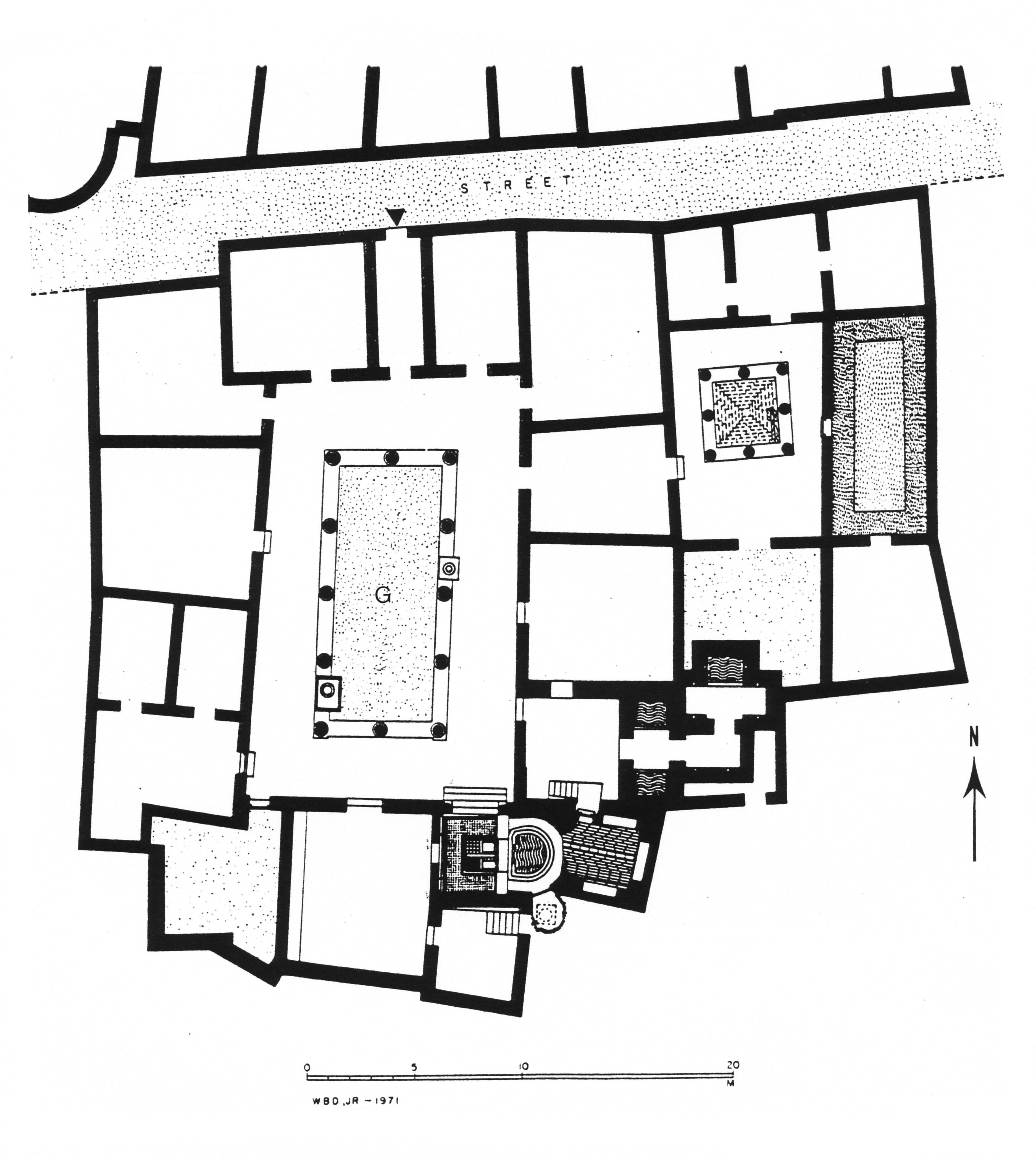Neoplatonic School Near the Areopagus
Province
Province Description
Roman intervention in Greek political affairs resulted in conflicts that led to the destruction of Corinth in 146 B.C. and the sacking of Athens in 86 B.C. It was not until 27 B.C., however, that Augustus formally organized the Roman province of Achaea. Achaea consisted of the cities and territories of the southern Greek mainland between the Peloponnese and Thessaly, as well as Epirus in the northwest and the Ionian and some of the Aegean islands. The provincial capital was Corinth. Under Nero in the mid-1st century A.D. Epirus became a separate province, and in the mid-2nd century Thessaly was detached and added to the province of Macedonia. Under Roman domination many cities such as Athens, Sparta, Patras, and Corinth grew in size and prominence, the latter two partly owing to their importance as ports. After an initial decline in the number of rural sites in the early Empire, by the late Roman period the countryside was densely settled with farms and villas, due to changing landholding patterns and Roman improvements in agricultural and irrigation technology. The main exports from Achaea were wine, particularly from the northern Peloponnese, as well as olive oil and honey, linen and woolen textiles and marbles.
Location
Sublocation
Garden
Neoplatonic School near the Areopagus (Omega House)
Keywords
Garden Description
Several houses with peristyle courtyards were built north of the Areopagus in the second half of the 4th century A.D. These have been interpreted as schools of the Neoplatonic philosophers in which the school directors lived and students were instructed.
One of these buildings, the so-called House C or Omega House, had two peristyle courtyards, of which the eastern and smallest was paved (Fig. 1). The house was assured of a constant supply of water, as it tapped into a spring higher up on the hill. The nymphaeum and semi-circular collecting basin on the southeast corner of the house were fed by this, the overflow being directed through a pipe to a well on the west side of the central, rectangular peristyle courtyard. The water taken from this well may have been used to water a garden, possibly one in the unpaved courtyard in which the well was situated (G on plan). A collection of marble statues, portrait busts, and reliefs from the 4th century B.C. to the 3rd century A.D. was discarded in this and other wells of the house in the first half of the 6th century, possibly at the same time Justinian ordered that pagan schools should be closed down. The house was destroyed in 582/3 after a period of Christian use.
Plans

Fig. 1: Plan of the so-called Omega House with a possible garden peristyle (G) on the Areopagus. Adapted from Camp 1986, fig. 170.
Dates
second half of the 4th century CE to the late 6th century CE
Bibliography
- J. McK. Camp, The Athenian Agora. Excavations in the heart of Classical Athens. London, 1986, pp. 202-211, figs. 170-186. (worldcat).
- A. Frantz, Late Antiquity: A.D. 267-700. The Athenian Agora XXIV. Princeton, 1988, pp. 40-48, pls. 6, 27a, 31-36a, 37a, 43. (worldcat).
- T. L. Shear, “The Athenian Agora: Excavations of 1970,” Hesperia 40, 1971: 266-270, 273-275, pls. 53-55, 58-59. (JSTOR).
Pleiades ID
TGN ID
Contributor
Maureen Carroll (ORCID: 0000-0001-9958-8032)
Publication date
21 Apr 20210